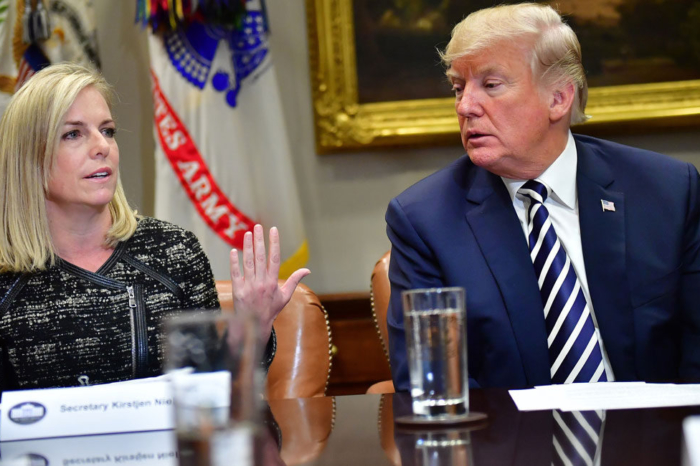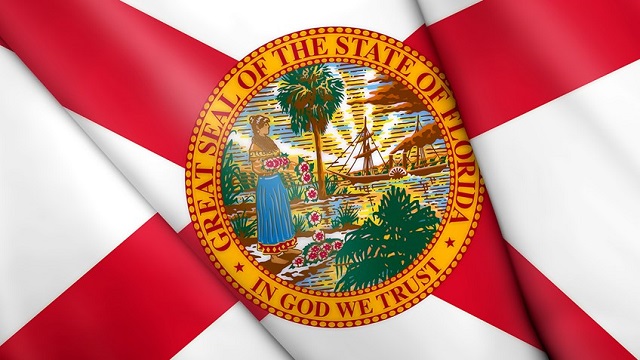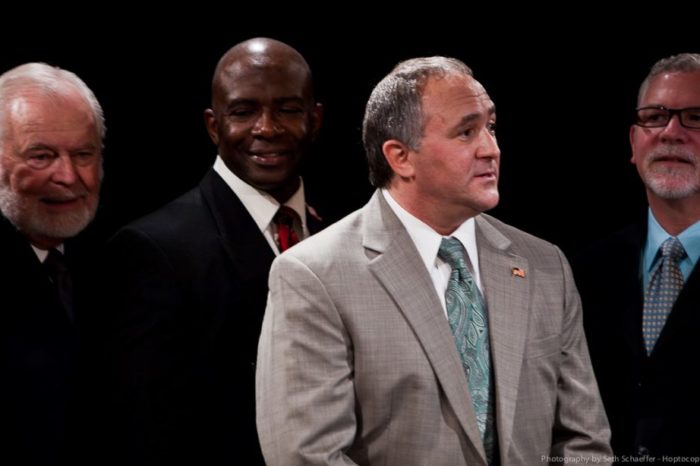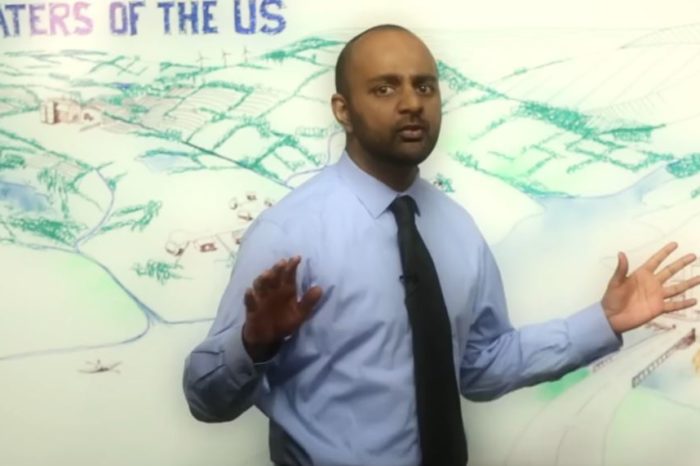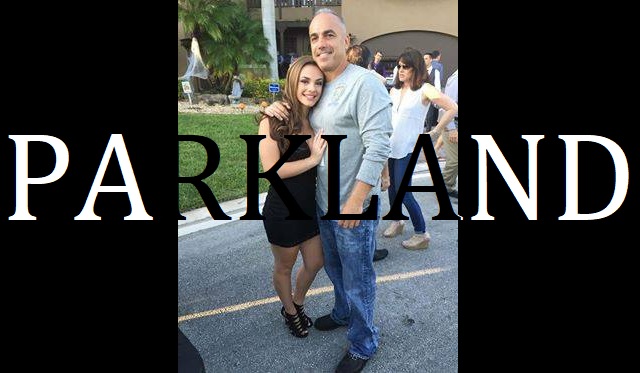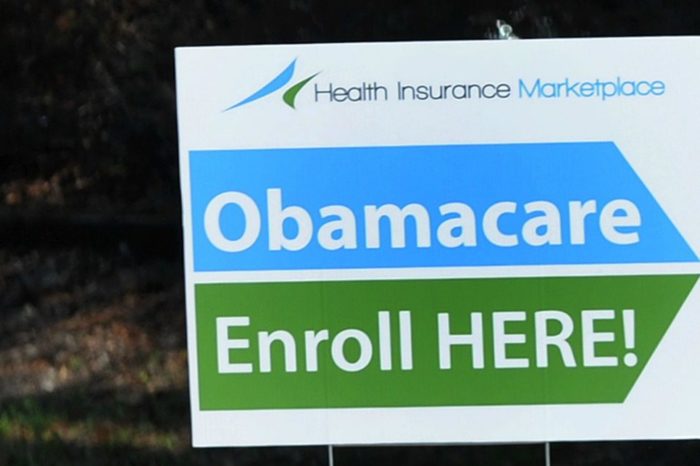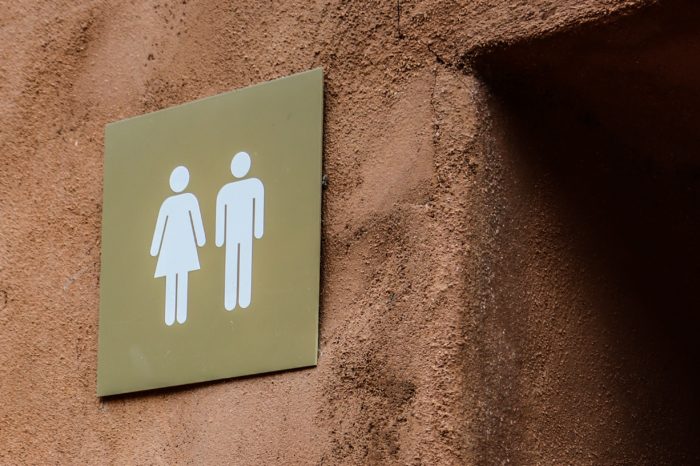A petition has been created to define gender as immutable and binary. The on-line form of this document may be signed by anyone in agreement with its contents.
RELATED ARTICLE: Misguided Proposal From Christian Leaders and LGBT Activists Is Anything but ‘Fairness for All’
Full text of the petition:
December 4, 2018
Acting Attorney General Matthew Whitaker, U.S. Department of Justice
Secretary Alex Azar, U.S. Department of Health and Human Services
Secretary Betsy DeVos, U.S. Department of Education
Dear Mr. Whitaker, Secretary Azar, and Secretary DeVos,
We, the undersigned medical, legal, and policy organizations and individuals applaud the Trump Administration’s intention to uphold the scientific definition of sex in federal law and policy, such that girls and women will regain their sex-based legal protections, and the human rights of all will be preserved.
On February 22, 2017, the Department of Justice, in conjunction with the Department of Education, sent a Dear Colleague letter rescinding unprecedented “guidance” the previous administration had issued to expand the definition of sex in Title IX to include gender identity. On October 4, 2017, the Department of Justice issued a Memorandum regarding Title VII of the Civil Rights Act of 1964 to clarify that gender identity is not legally included in the definition of sex, pointing out that the ordinary meaning of “sex” is biologically based. The New York Times article on Oct. 21, 2018 regarding a leaked memo from the Department of Health and Human Services (HHS) leads us to believe that HHS is continuing this trend and leading an effort to have a uniform, scientifically based, definition of sex across the various agencies. We write to applaud and encourage this effort.
Not only is an expanded definition of sex unscientific, but it has also proven harmful, as we detail below.
According to the Institute of Medicine, sex is a narrowly defined biological term. Sex is a biological trait that defines living things as male and female based on the complement of sex chromosomes and the presence of reproductive organs.[i] The American Psychiatric Association defines sex similarly as the “biological indication of male and female (understood in the context of reproductive capacity), such as sex chromosomes, gonads, sex hormones, and nonambiguous internal and external genitalia.” [ii]
Human sex is a binary, biologically determined, and immutable trait from conception forward.The norm for human design is to be conceived either male or female. Human sexuality is binary by design for the obvious purpose of the reproduction of our species. This principle is self-evident. “XY” and “XX” are genetic markers of male and female, respectively, and are found in every cell of the human body including the brain. Sex is established at conception, declares itself in utero, and is acknowledged at birth.
Sex differences are real and consequential. The Institute of Medicine recognized the singular importance of sex to health and the field of medicine nearly two decades ago. Sex chromosomes impart innate differences between men and women in literally every cell of our bodies.[i] There are over 6500 shared genes that are expressed differently in human males and females.[iii]These differences impact our brains, organ systems, propensity for developing certain diseases, differential responses to drugs, toxins and pain, differential cognitive and emotional processes, behavior and more.[i]
Individuals who identify as transgender deserve optimal medical treatment which is influenced by biological sex. In reality, an individual who identifies as transgender remains either a biological male or female. This objective biological fact has bearing upon their health even beyond sex-specific illnesses.
Diseases that affect both sexes often have different frequencies, presentations and responses to treatments in males and females; therefore, different preventative, diagnostic, and treatment approaches may be required for males and females. Doctors and scientists unconstrained by transgender politics know full well that were we to treat patients in accordance with a discordant gender identity, instead of their real sex, the results could be catastrophic.[i] For example, the heart medication, Betapace, is three times more likely to cause a lethal heart rhythm called torsades de pointes in women than it is in men.[iv]
Sex is not a spectrum; congenital disorders are not additional sexes. The final result of sex development in humans is unambiguously male or female over 99.98 percent of the time. “Intersex” is a term that encompasses a variety of congenital disorders of sex development that result in sex ambiguity and/or a mismatch between sex chromosomes and appearance.These disorders occur in less than 0.02 percent of all births.[v], [vi] A spectrum is defined as “a continuous distribution” or a distribution in which “no specific outcome is more likely than others.” [vi] Clearly, the existence of rare disorders of sex development do not constitute a sex spectrum.
As evolutionary biologist Dr. Colin Wright of University of California, Santa Barbara recently penned, “The claim that classifying people’s sex upon anatomy and genetics ‘has no basis in science’ has itself no basis in reality, as any method exhibiting a predictive accuracy of over 99.98 percent would place it among the most precise methods in all the life sciences.” [vi]
The use of congenital disorders to advance the myth that there are a multitude of human sexes which exist on a spectrum is ideological and political activism, not science.
Gender identity is not an immutable trait found anywhere in the body, brain, or DNA.[vii] Gender identity is an awareness of, and comfort level with, one’s physical body. Gender identity may be factually correct or factually incorrect, and, unlike sex, may change. Children with gender dysphoria, for example, will come to identify with their biological sex in 61-98 percent of cases by adulthood.[viii] There is also a rise in the number of adults who seek surgery to reverse their past sex reassignment surgeries.[ix]
The claim that upholding the scientific definition of sex will increase suicide among transgender identifying people is false. Individuals who identify as transgender may have mistaken beliefs about themselves and their bodies. They suffer real emotional distress and are at a higher risk for mental illness, including suicidal ideation, as compared to the general population. Social and medical “gender transition and affirmation,” however, is not proven to decrease suicide rates.
The rate of suicide attempts among transgender identified individuals has been estimated to be almost 9 times that of the general population.[x] Sweden is a transgender affirming country that has adopted laws and policies conflating sex and gender-identity. Nevertheless, a study conducted by researchers there in 2011 found the rate of completed suicides among surgically “gender-affirmed” adults to be 19 times greater than that of the general population.[xi] Clearly, transgender affirmation does not prevent suicide, and may paradoxically worsen the emotional health of these individuals in the long term.
Upholding the scientific definition of sex in law and policy protects everyone’s right to privacy, protection and equal treatment, especially that of girls and women. It is impossible to protect girls’ and women’s rights unless the law defines them solely according to objective biological reality and not according to subjective gender identity. When gender identity is erroneously treated as equivalent to sex in law and policy, then a male may at any time demand the rights, protections and access afforded to females. This automatically strips girls and women of their right to sex-based privacy, protection, and a proper playing field to compete equally. Transgender ideology thereby transforms all that was once reserved for females alone into another male prerogative.
Boys, for example, are literally running away with state level championship titles in girls’ sports because they identify as transgender.[xii] How is it just to award honors – which could include athletic college scholarships – reserved for female high school athletes, to boys who are innately biologically bigger, stronger and faster?
Of greater concern, gender identity has been used to allow biological males in spaces previously reserved for women. As a result, girls and women are suffering sexual assaults at the hands of biological men in women’s shelters,[xiii], [xiv] women’s prisons [xv] and even elementary school girls’ bathrooms.[xvi]
As the biological men and women they are, transgender-identified individuals possess the same human dignity and right to the equal protection of the law as all Americans. For the law to respect the human dignity of all Americans, including those who identify as transgender, it must be based on biological truth; not on ideological falsehoods at the expense of children and women’s rights, health and well-being.
For all of these reasons, it is with unwavering conviction that we urge the Trump Administration to uphold the original scientific meaning and legal intent of the term “sex” in federal law and policy.
Please note that university and hospital affiliations are for identification only and do not imply institutional endorsement.
Sincerely,
Michelle Cretella, M.D.
Executive Director, American College of Pediatricians
Quentin Van Meter, MD
President, American College of Pediatricians
Pediatric Endocrinologist
Donna Harrison, M.D.
Executive Director, American Association of Pro-life Obstetricians and Gynecologists
Peter Morrow, M.D.
President, Catholic Medical Association
Stephen M. Krason, Ph.D.
President, Society of Catholic Social Scientists
Paul McHugh, M.D.
University Distinguished Service Professor of Psychiatry at Johns Hopkins Medical School and the former psychiatrist in chief at Johns Hopkins Hospital
Michael K. Laidlaw, M.D.
Endocrinologist and member of gdworkinggroup.org
Craig Stump M.D., Ph.D., FACE
Endocrinologist, University of Arizona College of Medicine
Paul W. Hruz M.D., Ph.D.
Pediatric Endocrinologist, Physician-Scientist, Associate Professor of Pediatrics, Associate Professor of Cellular Biology & Physiology
Angela Lanfranchi M.D. FACS
Clinical Assistant Professor of Surgery Rutgers-Robert Wood Johnson Medical School
Susan J Bradley, M.D., FRCP(C)
Professor Emerita, University of Toronto
J. Michael Bailey, Ph.D.
Professor of Psychology Northwestern University
Marie T. Hilliard, MS, MA, JCL, Ph.D., RN
The National Catholic Bioethics Center
Mary Lou Singleton, MSN, FPC-BC
Christopher Doyle, LPC
Co-Founder National Task Force for Therapy Equality
David Pickup, LMFT
Co-Founder National Task Force for Therapy Equality
Laura Haynes, Ph.D., California Licensed Psychologist
USA Representative, International Federation for Therapeutic and Counseling Choice (IFTCC.org)
Michael Farris, J.D.
President, CEO, & General Counsel
Alliance Defending Freedom
Matthew D. Staver, Esq.
Founder and President, Liberty Council
Charles LiMandri, J.D.
Founder and President, Freedom of Conscience Defense Fund
Robert J. Muise, Esq.
Co-Founder, American Freedom Law Center
Gerard V. Bradley, J.D.
Professor of Law University of Notre Dame
Steven D. Smith, J.D.
Warren Distinguished Professor of Law University of San Diego
Maimon Schwarzschild, J.D.
Professor of Law University of San Diego
Larry Alexander, LL.B.
Warren Distinguished Professor of Law University of San Diego
Tony Perkins
President
Family Research Council
Frank Cannon
President
American Principles Project
Matthew J. Franck, Ph.D.
Senior Fellow, Witherspoon Institute
Sharon Slater
President, Family Watch International
Austin Ruse
President, Center for Family and Human Rights
Allan C. Carlson, Ph.D., Editor,
The Natural Family: An International Journal of Research and Policy
Patrick Lee, Ph.D.
McAleer Professor of Bioethics
Center for Bioethics, Franciscan University of Steubenville
Christopher Wolfe, Ph.D.
Distinguished Affiliate Professor, University of Dallas
President, American Public Philosophy Institute
Rev. D. Paul Sullins, Ph.D.
Research Professor of Sociology and Director, Leo Institute for Catholic Social Research, The Catholic University of America
Robert G Kennedy, Ph.D.
Department of Catholic Studies University of St. Thomas
Jennifer Roback Morse, Ph.D.
Founder and President, The Ruth Institute
References
[i] Exploring the Biological Contributions to Human Health: Does Sex Matter? In: Wizemann TM, editor; Pardue ML, editor. Washington, DC: The National Academies Press; 2001.
[ii] American Psychiatric Association, Diagnostic and Statistical Manual of Mental Disorders: DSM-5 (Washington, D.C.: American Psychiatric Publishing, 2013), p. 829.
[iii] “Researchers Identify 6,500 Genes That Are Expressed Differently in Men and Women,” Weizmann Wonder Wander (Weizmann Institute of Science), May 3, 2017, online at: https://wis-wander.weizmann.ac.il/life-sciences/researchers-identify-6500-genes-are-expressed-differently-men-and-women; reporting on: Moran Gershoni and Shmuel Pietrokovski, “The landscape of sex-differential transcriptome and its consequent selection in human adults,” BMC Biology 15:7 (2017), which says, “[T]here are over 6500 protein-coding genes with significant SDE [sex-differential expression] in at least one tissue.” Online at: https://bmcbiol.biomedcentral.com/track/pdf/10.1186/s12915-017-0352-z.
[iv] Lehmann MH, et. al. Circulation. 1996 Nov 15;94(10):2535-41. Abstract available online at: https://www.ncbi.nlm.nih.gov/pubmed/8921798
[v] Sax L. “How Common is Intersex? A Response to Anne Fausto-Sterling,” Journal of Sex Research 39:3 (August 2002), pp. 174-178. Online at:
http://www.leonardsax.com/how-common-is-intersex-a-response-to-anne-fausto-sterling/.
[vi] Wright C. “The New Evolution Deniers.” Quillette. Nov 30, 2018. Available online at: https://quillette.com/2018/11/30/the-new-evolution…
[vii] McHugh PR, Mayer LS. “Sexuality and Gender findings from the Biological,Psychological and Social Sciences.” The New Atlantis. Fall 2016. Available onlineat: https://www.thenewatlantis.com/publications/introd…
[viii] Ristori J, Steensma TD. Gender dysphoria in childhood. Int Rev Psychiatry. 2016;28(1):13-20.
[ix] Borreli L. “Transgender Surgery: Regret Rates Highest In Male to Female Reassignment Operations.” Newsweek. October 3, 2017. Available online at: https://www.newsweek.com/transgender-women-transge…
[x] Haas AP, Rodgers PL & Herman J. “Suicide Attempts Among Transgender and Gender Non-Conforming Adults: Findings of the National Transgender Discrimination Survey,” Williams Institute, UCLA School of Law, January 2014. Available online at: http://williamsinstitute.law.ucla.edu
[xi] Cecilia Dhejne, et al., “Long-Term Follow-Up of Transsexual Persons Undergoing Sex Reassignment Surgery: Cohort Study in Sweden,” PLoS ONE 6 (2011); online at: http://journals.plos.org/plosone/article?id=10.1371/journal.pone.0016885.
[xii] Mayer R. “Transgender Track Athlete Wins CT State Championship, Debate Ensues.” June 13, 2018. CBS News. Available online at: https://newyork.cbslocal.com/2018/06/13/transgende…
[xiii]Hoggard, Corin. “Shelter forced women to shower with person who identified as a transgender woman and sexually harassed them, lawsuit says.”ABC 30 Action News, Fresno, CA, May 23, 2018; online at: https://abc30.com/homeless-women-harassed-in-showe…
[xiv] Sam Pazzano, “Predator who claimed to be transgender declared dangerous offender,” Toronto Sun, February 26, 2014; online at: http://www.torontosun.com/2014/02/26/predator-who-claimed-to-be-transgender-declared-dangerous-offender.
[xv] Janet Fife-Yeomans, “Sex change killer Maddison Hall to be free as a bird,” Daily Telegraph, April 2, 2010; online at: https://www.dailytelegraph.com.au/news/nsw/sex-change-killer-to-be-free-as-a-bird/news-story/b1fecc9a9a4717607de6e980980e0ba5?sv=e95663cd723e2f8ffa0caa3329e03203.
[xvi] Alliance Defending Freedom, “US opens investigation into sexual assault of minor child in Georgia, violation of Title IX,” Press Release (October 3, 2018); online at:
http://www.adfmedia.org/News/PRDetail/99205?search=1.
EDITORS NOTE: The featured photo is by Ken Treloar on Unsplash.





